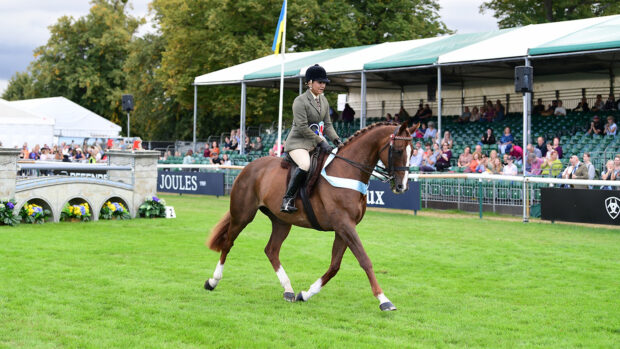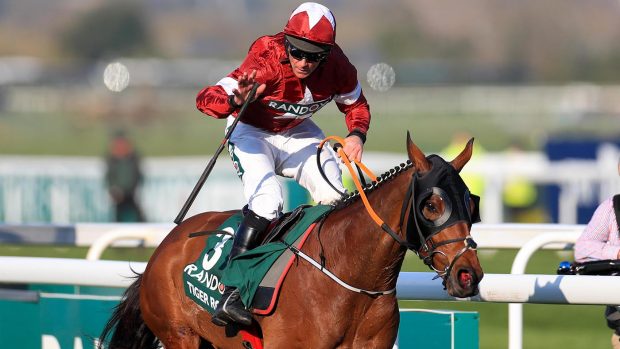As the value of top polo ponies continues to soar, more players are turning to the racetrack to source their strings. But what are the benefits and challenges of retraining a thoroughbred for polo?
1. ‘There’s no better equine athlete than the thoroughbred’
Watching two polo players fly up the Queen’s Ground at Guards Polo Club, racing for goal, you could be forgiven for momentarily thinking you were up the road at Ascot Racecourse. Top-class ponies can display breathtaking speed, but it’s hardly surprising when you consider that a growing number began their careers on the racetrack.
“There’s no better equine athlete than the thoroughbred,” says David Morley, the Hurlingham Polo Association’s welfare officer and one of the early pioneers of retraining racehorses for a career on the polo field.
“They’re not always easy to ride, but when they’re good, they’re very good. Before World War II, a lot of thoroughbreds were used in polo, but training of them ceased during the war and afterwards more players started reverting to the South American breeds.”
2. They have the backing of Retraining of Racehorses
David first became involved in retraining racehorses for polo in the 1970s, but it’s over the past decade that thoroughbreds have begun to dominate players’ strings significantly. This is in no small part thanks t to the efforts of Retraining of Racehorses (RoR), whose well-established performance award series and annual Racing to Polo Challenge provide multiple opportunities to highlight the opportunities for racehorses in polo.
3. Up and coming players see the value of these horses
“Thoroughbreds have always had their place in polo, like the rest of the equestrian world, but what we’ve done is make people more aware of their value,” says RoR chief executive Di Arbuthnot. “A few years ago it was a much more closed shop that used them for polo, but we’ve been giving prizes for ex-racehorses in Pony Club polo for 10 years now, and those young guys have gone on and continued to see their value. It’s good for us and it’s good for them.”
One of those young players is 25-year-old six-goaler Jack Richardson, one of the first of the current batch of young England professionals to take on racehorses in bulk.
Between Jack and his younger brother Ralph, they have more than 30 ex-racers, with 22 of those currently playing polo. Jack’s efforts and expertise when it comes to thoroughbreds have not gone unnoticed: in 2015, he was named RoR young producer of the year, and his 10-year-old mare Light Nights was awarded the RoR best playing pony (BPP) prize for her performance for England in the prestigious Coronation Cup international last year.
4. Ex-racehorses can be a cheaper option for players…
“Buying and retraining ex-racehorses for polo is definitely the cheaper option, whether you buy direct from the trainer or go to the sales,” explains Jack, who purchased the Tim Easterby-trained Light Nights, who is by Acclamation, as a three-year-old. “It’s a cost-effective way to build up a string, though you do have to view it as an investment. If you buy a horse straight out of the trainer’s yard for around £1,000, it will probably have cost you about £8,000 by the time it’s playing, but this way the expense is spread over a longer period than when you buy a made polo pony.”
Likewise, for six-goaler Richard Le Poer, winner of the RoR young producer award in 2016, sourcing ex-racehorses is the only way to build a financially viable polo operation. His current string is 100% thoroughbred, with many horses sourced from Ireland, including his five-year-old mare Inshallah, formerly trained by Jim Gorman under the name Broadfield Puddle, and winner of the open division of the RoR Racing to Polo challenge in 2016.
5. …as long as they have the right conformation and movement
“The key is to buy the right animal to start with, with conformation that lends itself to polo,” Richard says. “Selection is based around the essential moves required of a polo pony, such as stopping and turning. Horses who are too long in the back will struggle to turn tightly; those with straighter hindlegs and less angle in the hock won’t be able to rate [move smoothly through the gears] and stop while staying collected. I also look at the natural curve and position of the head and neck to assess their ability to stay in balance while changing speed quickly. Polo ponies must move close to the ground with a low centre of gravity, to help create a level platform for you to hit the ball.”
6. The right temperament is also crucial
However, it is temperament that is most important to consider when weighing up whether a racehorse will have a successful second career on the polo field. After all, the two sports, in many ways, could not be more different.
“What you are asking a horse to do in polo is completely against their natural instinct: bashing into other horses, going against the traffic, coping with a rider swinging a stick around,” points out Richard. “Any potential polo pony has to be extremely resilient and willing to accept unnatural things without getting upset.”
7. And there can be challenges…
As David Morley explains, the simplest things can prove tricky for racehorses to adapt to, such as the long legs of a polo player being wrapped around their sides. Many won’t be used to being mounted from the ground, let alone straight from another horse, such is the nature of the lightning-fast changeovers in polo. Only when a horse is comfortable with the basics can the polo training begin.
“Horses have to learn to go on or off the bridle while staying calm, to cope with the mallet and go upsides another horse without overtaking. Most will take to it eventually, but it’s challenging to teach them and you have to be honest with yourself how viable it is to continue the training. If they don’t learn quickly, it’s often better to sell the horse so it can pursue a different career.”
Continued below…
Liked this? You may also enjoy reading these articles…
We've dug into the archives to find photos
“These wonderful animals can put their intelligent minds

12 archive photos of Prince Philip as he undertakes final public engagement

Life after racing: new film showcases versatility of ex-racers
8. Racehorses’ speed and stamina come into their own
Of course, speed and stamina are essential in polo and this is where thoroughbreds come into their own. Jack Richardson highlights stamina and strength as Light Nights’ strongest attributes — he was able to play the mare comfortably for five minutes straight during England’s Coronation Cup victory in 2016, which is particularly impressive in such a high-level, high-speed match.
But David Morley points out that players shouldn’t get too carried away with the obvious attributes. “Pretty much all thoroughbreds are fast enough for polo, but you don’t want a very long-striding horse, as polo requires as much quick deceleration as acceleration,” he explains. “You’re better off finding a shorter-striding horse with the ability to stretch out, who comes back into their comfort zone when being asked to decelerate.
“I also look for lateral ability — a good polo pony shouldn’t bend around your leg too much, but move laterally on one plane as much as possible.”
Don’t miss our first polo report of the season from the Prince of Wales Trophy final in next week’s issue of Horse & Hound magazine (25 May 2017)
This is article was first published in the 11 May issue of Horse & Hound magazine





